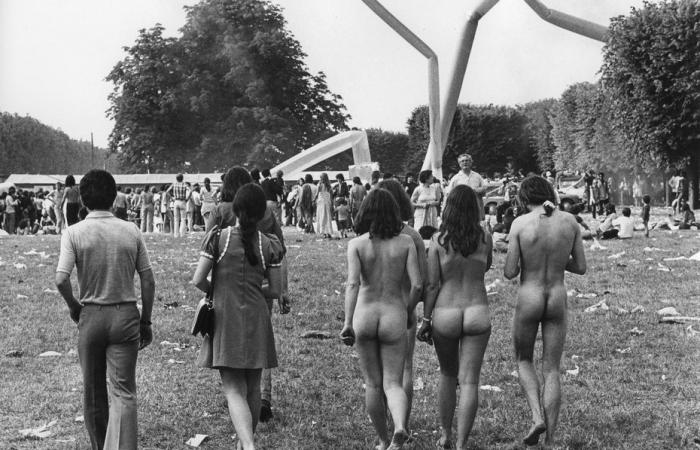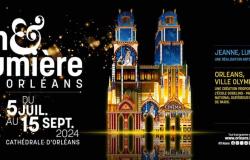The Marseille Museum of Civilizations is looking at a little-explored theme in France, naturism and its history, at the heart of a new exhibition “Naturist Paradises”. It’s unique and can be discovered all summer at the Mucem from Wednesday, July 3… until December 9, 2024.
The world’s leading tourist destination for fans of “living naked”, France has become a “naturist paradise”, with no equivalent in Europe. In this new exhibition to be discovered from July 3 to December 9, the Mucem seeks to explore this unique and unifying phenomenon that is naturism. This is the first exhibition of this magnitude organized in France on this social subject and its history. “Naturist Paradise” brings together 600 photographs, films, paintings, prints, sculptures and other works or documents. France 3 Provence gives you details on five things to see and know in this exhibition.
It is first of all a therapeutic practice to strengthen your body
Jacques-Joseph Muller, known as Jacomo, “Leysin, air and sun”, circa 1930. Poster (facsimile of the original lithograph). Swiss National Library, Print Room, Poster Collection, Bern. Courtesy of Hadidi-Daho Lataouia.
•
© Jacques-Joseph Muller Fund (Jacomo); Swiss National Library
“Taking off one’s clothes is a gesture of liberation, a utopia of returning to a more essential life, in symbiosis with nature and the living”, explains Amélie Lavin, co-curator of the exhibition.
Originally, naturism was a therapeutic practice, of which nudity was only one of the components intended to strengthen the body, like water baths, clean air or even a plant-based diet.
The first naturists were doctors and had in common a rejection of urban life and the rapid industrialization suffered by Europe during the 19th century.
In the first circles of naturists which were created in Germany, Switzerland and then in France, vegetarianism and hygiene were two essential elements; full nudity was only experienced little by little before settling into a more hedonistic approach. , which places the notion of freedom at the heart of naturist practice.
Naturism was built in France between the wars
French Gymnastics Club (CGF), circa 1930.
•
© Gymnastic Club of France
The communities represented in the exhibition were born in the 1920s. In France, they were built between the two wars, “in a country where nudity was marked by shame and censorship of the naked body”, points out Amélie Lavin. For this reason, the first communities hid from view in private castles or on islands.
The 1950s saw the development of more popular naturism, with the creation of Sun Clubs and the French Naturism Federation. Today, France has become the world’s leading tourist destination for naturists.
“Marseille, capital of naturism” in 1930
Raphaël Chatelain, Nude in the Levantine coves, June 2021.
•
© Raphaël Chatelain
Created in 1930, “Les Naturistes de Provence” is one of the first naturist associations in France, guided by a hygienist and therapeutic orientation, supported by the action of two doctors, Poucel and Beltrami.
With the permission of the municipality, Marseille naturists find refuge on the island of Ratonneau, where the Caroline hospital is unoccupied. The Swiss review The new time dedicated to them in a special issue from 1930, under the title: “Marseille, capital of naturism”.
In 1947, a Russian anarchist couple, Aliocha and Génia Miesseroff, set up a private naturist centre at Lapin Blanc, in the Vieille-Chapelle district (8th arrondissement). The centre moved in 1959 to Gémenos, then to La Bédoule, before closing in 1990.
Naturist tourism is growing in Cap d’Agde
Laurent Sola, series “Nudists in Cap d’Agde”, June 1982.
•
© Laurent Sola / Gamma-Rapho
In the mid-1950s, wine growers in Cap d’Agde noticed German tourists pitching their tents and swimming naked. From there was born the idea of a family camp, which over the summers would become more comfortable and inspired other pioneers of naturism on this Mediterranean coast.
In a few decades, Cap d’Agde will become a paradise for naturists and investors. “The arrival of a new community of libertines in search of a territory of sexual freedom offers them a source of rapid rental income,” notes the Mucem exhibition.
Very different naturisms depending on the country
12. Louis Boilley, Helio-marin Center of Montalivet, 1965.
•
© Fonds Louis Boilley /Karel Oliviero
The exhibition focuses on the different “founding fathers and mothers” of naturism, who forged “diverse practices rather than a uniform and monolithic naturism”, underlines Amélie Lavin.
Not all Europeans have the same relationship with nudity. In France, the offense of indecent exposure has no longer existed since 1994; it has been replaced by an “offense of sexual exhibition imposed in view of others”. Naturism is authorized, but only in places subject to authorization, such as campsites or dedicated beaches.
Even at home, nudity is only “legal” if you remain hidden from outside view.
Amélie Lavin, co-curator of the exhibition
France still stands out from its European neighbors who have decriminalized nudity. In French law, nudity necessarily remains sexual and therefore reprehensible wherever it is not explicitly authorized”, notes again Amélie Lavin.
Open to all, including minors, the exhibition aims to “deconstructing preconceived ideas and stereotypes about naturism, which is first and foremost a philosophy of life, a family practice bringing together people of all ages and backgrounds, who seek to live simply in contact with nature”summarizes the chief curator of Mucem.






